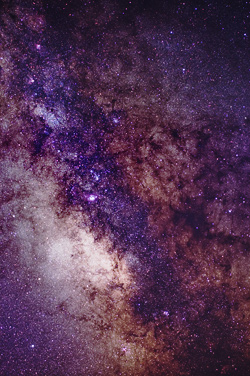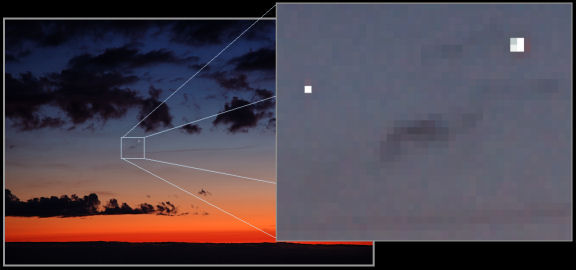<<PREVIOUS -
HOME -
CONTENTS -
NEXT>>
OMSI ASTROIMAGING -
![]()
OMSI Astrophotography Conference 2007 Summary
Introduction to Astronomy Image Processing for
Electronic and Film Cameras
Electronic and Film Cameras
Saturday, March 10, 2007, 8:00 am to 10:00 pm
Oregon Museum of Science and Industry
(OMSI)
Auditorium
1945 SE Water Avenue
Portland, OR 97214-3354
Oregon Museum of Science and Industry (OMSI) Auditorium
1945 SE Water Avenue
Portland, OR 97214-3354
Astrophotography using electronic cameras and film cameras provides many benefits such as observing fainter details, making scientific measurements and producing stunning images that are shared with others. A key part of astrophotography is using image processing software to remove camera defects, lens defects and telescope defects. Also, image processing seems to have a magical ability to reduce sky glow and to enhance hidden details in the image.
The OMSI Astrophotography Conference covered the various aspects of image processing from the basics to advanced techniques. This conference was for attendees with no image processing experience to those who use image processing for their astro images.
The first session in the morning introduced the fundamentals of image processing as applied to astrophotography and provided a foundation for sessions that follow. The other sessions showed how to plan your image taking and how raw camera images are transformed into spectacular images of the universe. A special session on scientific measurements gave an overview of astrometry and photometry and demonstrate how to use image processing software to make astrometry and photometry measurements on images.
Two image processing labs, one using Photoshop and the other using free software, showed step-by-step how to improve astro images.
This OMSI conference is sponsored and hosted by Jim Todd.
OMSI Astrophotography Conference 2007 agenda PDF (20KB)
Schedule May Change and Check Back Here for Updates
- 8:00 am Registration
- 8:30 am Image Processing Introduction,
David Haworth
- Types of image processing software
- Pixels, color, and dynamic range
- Pixel values and histogram
- White and black points
- Reducing camera and optics defects
- Image calibration with dark frames
- Noise and stacking images
- Nonlinear image stretch
- 10:00 am Break
- 10:30 am Image Processing - From Photons to Image of
Messier 33,
Tom Carrico
- Planning an image for successful processing
- What to do before taking an image (flats, darks, bias, color calibration)
- Deciding on the type of image to create
- black and white, color, narrow band, etc
- Optimizing your signal to noise ratio
- determining length and number of exposures, best time to image
- Calibration of your data
- how to make proper calibration data
- applying calibration correctly
- Aligning and combining your images
- Methods for alignment
- Methods for combining
- Processing the luminance
- Criticially examining the images to keep
- Levels, curves, sharpening, smoothing, noise reduction
- Using MaxIm, CCDStack
- Processing the color
- Maintaining color balance
- Preparation for luminance combining
- Noise reduction
- Processing in Photoshop
- Meaning of LRGB processing
- Tools for improving your image, including plug-ins
- Planning an image for successful processing
- 12:00 am Lunch on your own at the OMSI cafeteria
- 1:00 pm Getting Started Hints and Tips from My Experiences, Mike Hagen
- Equipment Basics - Pixels, Focal Length and Field of View
- Taking Photos – Dark frames, Exposure and Drift Error
- Process Photo - Stacking and Stretching
- Summary of Tips
- 1:30 pm Photoshop Image Processing for Astro Images,
Dave Sandage
- Staring with reduced and calibrated L, R, G, and B images, use Photoshop
to create the final color image:
- Fine tuning the luminanance image
- Levels and curves to adjust overall brightness and contrast
- Selective contrast adjustments
- Selective bluring and sharpening
- Tuning the color images
- Merging the R, G, and B images
- Tuning the brightness and contrast of the RGB image
- Using the histogram to adjust color balance
- Bluring the color channels
- Creating the final LRGB image
- Fine tuning the luminanance image
- Staring with reduced and calibrated L, R, G, and B images, use Photoshop
to create the final color image:
- 2:30 pm Afternoon Snack Break
- 3:00 pm Image Processing Using Free Software,
David Haworth
- Lab is designed for attendees with their laptops to follow along with the presenter
- Instructions to download lab images before the conference will be Email to registered attendees
- DeepSkyStacker Image Processing Lab

- Download DeepSkyStacker for Windows
- Dark frames
- Light frames
- Stacking
- Output file types
- Pleiades Software Image Processing Lab

- Download PixInsight LE Freeware for Windows
- Curves
- A Trous Wavelets
- GIMP Image Processing Lab
- Download GIMP for Windows

- Layers
- Sharpening techniques
- Curves
- Download GIMP for Windows
- 4:30 pm Dinner On Your Own

- 6:00 pm Adobe Photoshop CS3 Beta Image Processing Lab,
David Haworth
- Lab is designed for attendees with their laptops to follow along with the presenter
- The Milky Way image to the right will be used in the lab
- Instructions to download Milky Way lab images before the conference will be Email to registered attendees
- Go to Adobe to download the trial Photoshop CS3 Beta free for CS2 users
- Camera Raw
- Stacking two images with Auto-align layers
- Curves Adjustment Layer
- Smart objects with Smart Sharpen
- 7:00 pm Open Session: Photometry of Cataclysmic Variable Stars, Harry Colvin
- Harry Colvin has been an active amateur astronomer for 10 years operates a private observatory in Western Washington and serves as President of the Battle Point Astronomical Association. His visual astronomy awards include the Honorary Messier Club Certificate and the Herschel 400 Award. In 2006 he completed a survey of the Astronomical League’s Galaxy Groups and Clusters, a two-year project in which he imaged over 1,000 galaxies. His most recent project, in collaboration with the Center for Backyard Astrophysics, involves photometry of cataclysmic variable stars. In his presentation, he will discuss the equipment, software, and procedures he uses to monitor and study these most interesting star systems.
